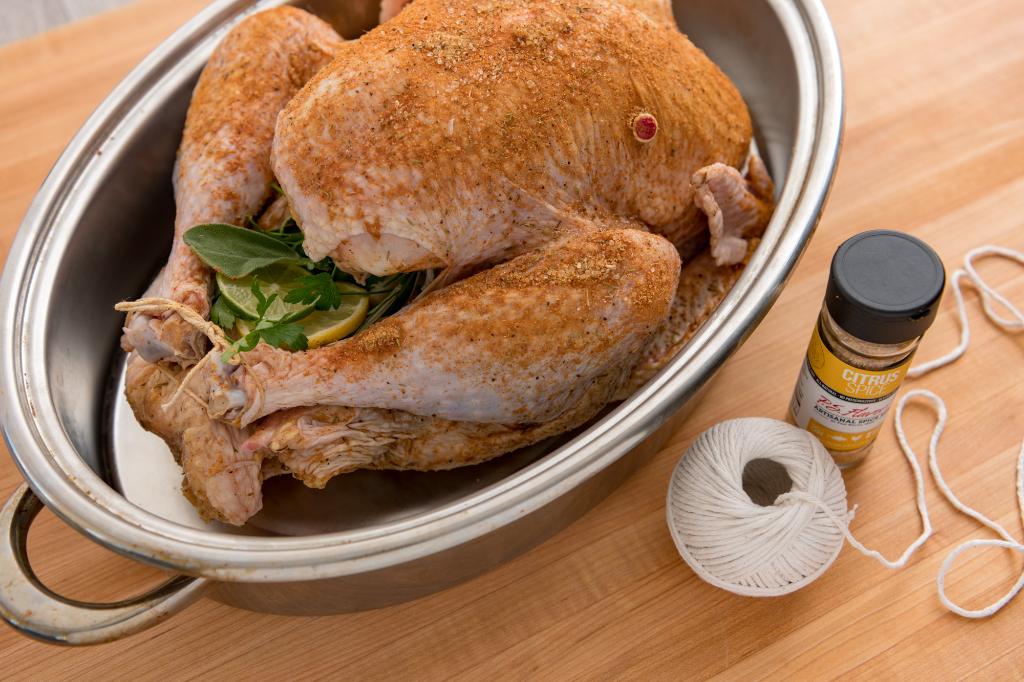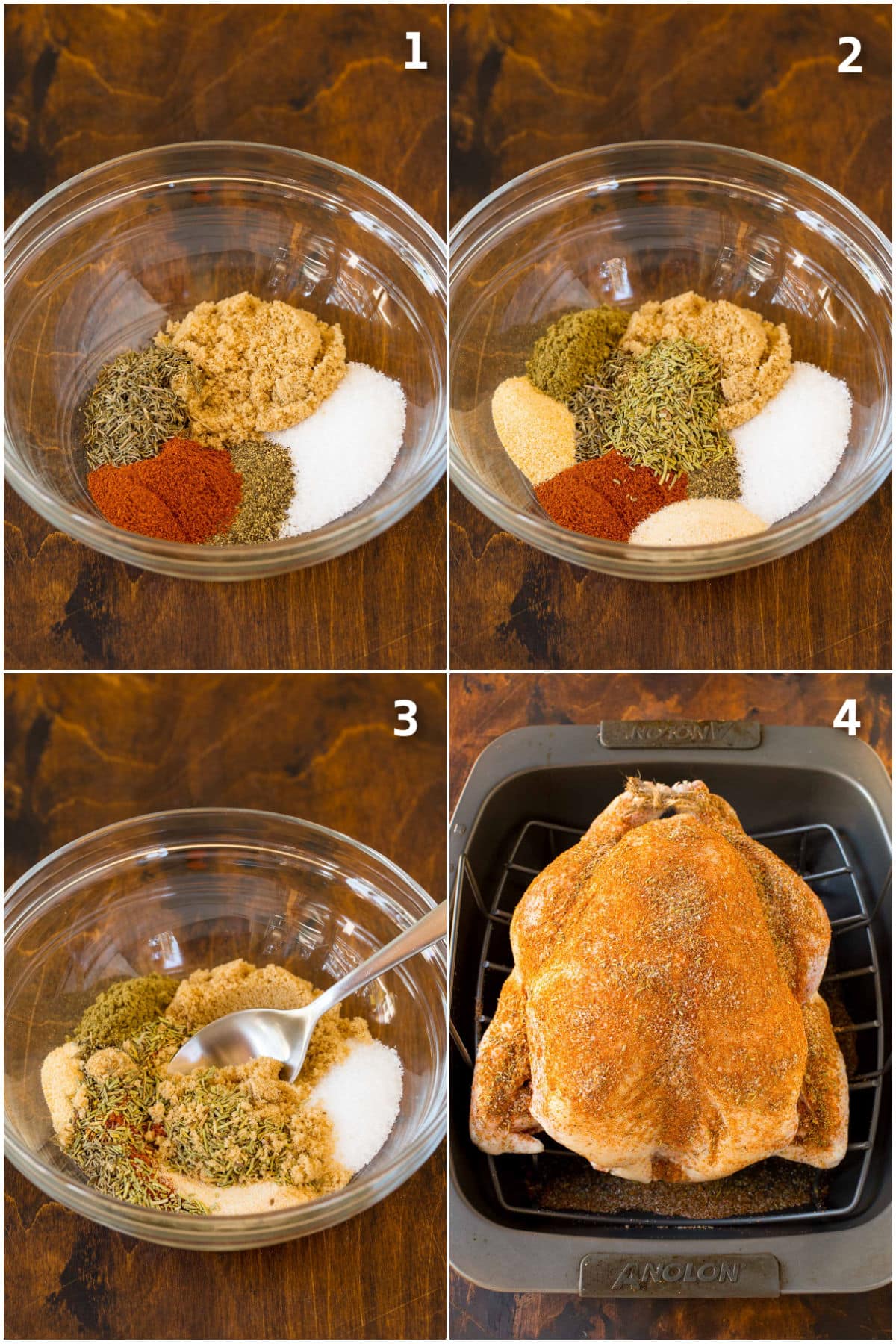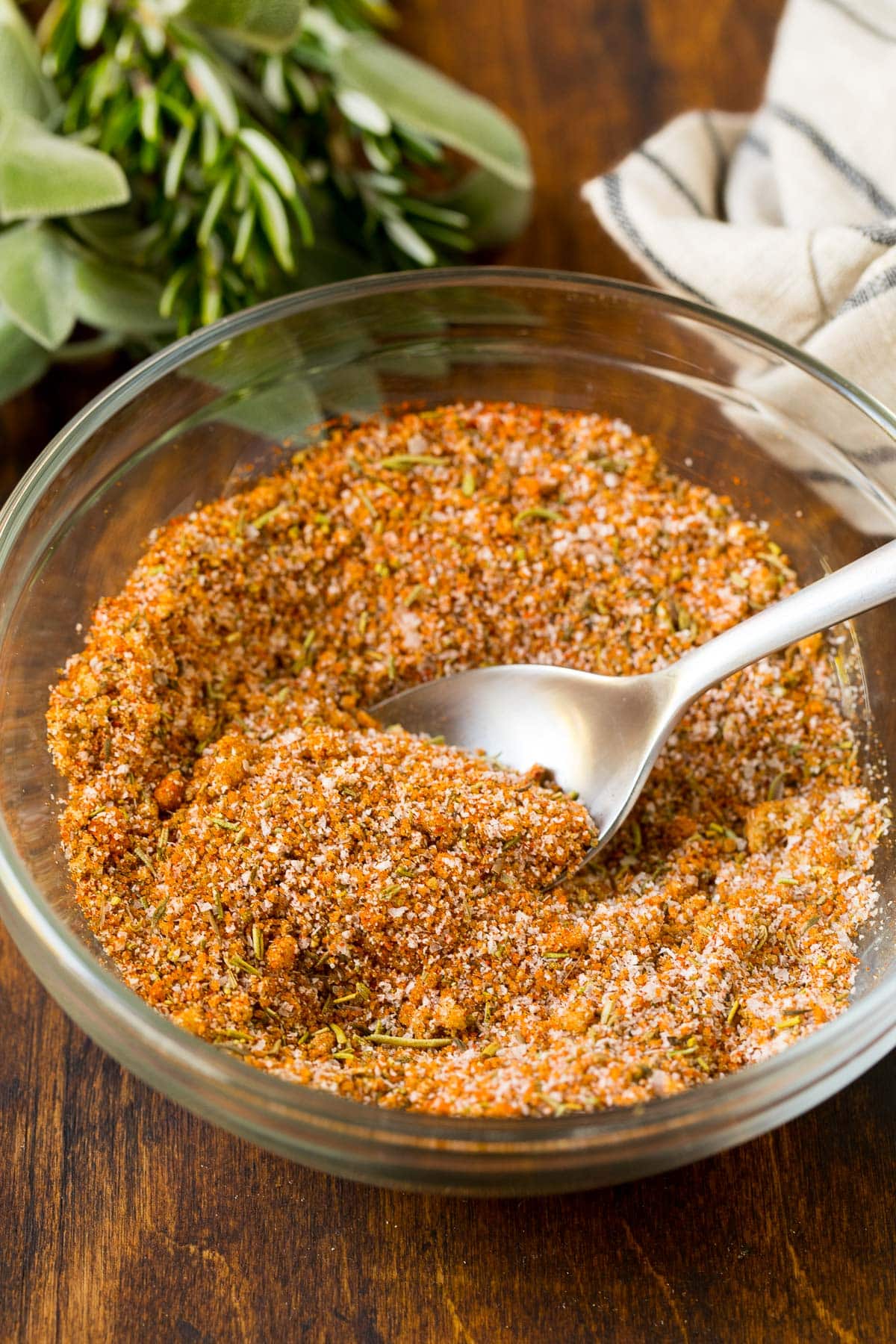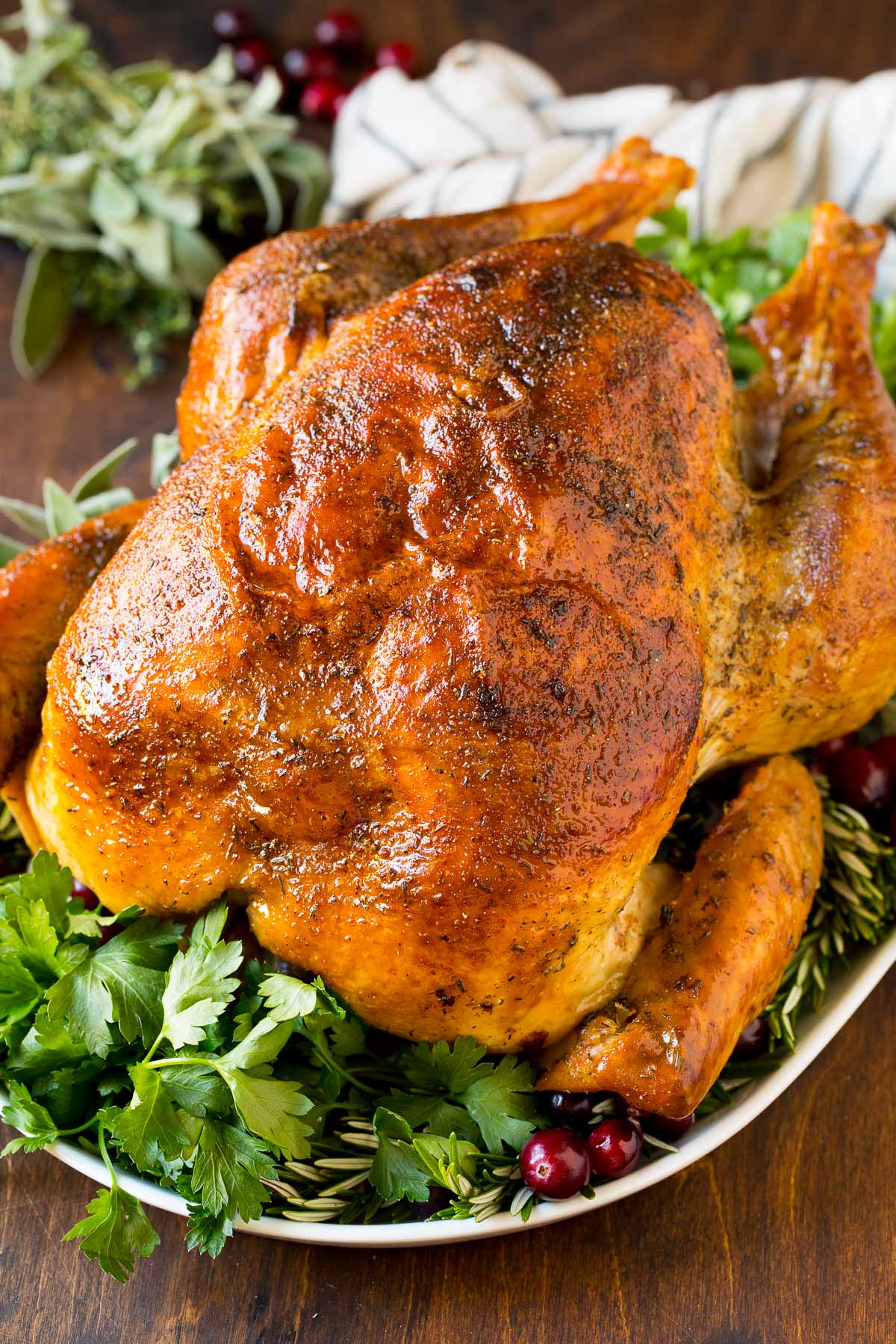This turkey rub is a blend of savory spices that come together to make the ultimate poultry seasoning. Homemade spice rub will add plenty of flavor to your Thanksgiving turkey, and also works well with chicken, pork and beef.
When I want to make a turkey that’s sure to impress, I use my homemade turkey rub as the primary seasoning agent. I serve my turkey with classic side dishes such as sweet potato casserole and cranberry relish for a memorable meal.
There are so many different ways to prepare a turkey, from brining to roasting to deep frying and more! This turkey rub turns an ordinary roasted turkey into something extraordinary. Best of all, it takes just 5 minutes to make!
This recipe is made with a variety of herbs and spices including salt, brown sugar, paprika, pepper, thyme, rosemary, sage, garlic powder and onion powder.
A Perfect Rub to Bring Out the Best in Your Turkey
Finding the ideal turkey rub can transform your standard Thanksgiving bird into a mouthwatering culinary masterpiece. With so many options to choose from, it can be challenging to select the perfect blend of herbs, spices, and seasonings to complement the flavor of turkey. This comprehensive guide will explore popular pre-made turkey rubs on the market, provide recipes for making your own custom blends, and offer tips on how to apply rubs for maximum flavor.
Why Use a Turkey Rub?
Using a quality turkey rub is one of the easiest ways to infuse big, bold flavor into your holiday centerpiece. The combination of spices permeates the meat to give it a flavorful crust when roasted or smoked. Rubs add complexity, enhance juiciness, and can give the skin a beautiful mahogany color. They are ideal for bringing out the natural flavors of mild turkey meat. A good turkey rub contains salt, which helps brine the bird from the inside out. The layer of seasoning also forms a flavorful bark when the turkey is cooked.
Popular Brand Name Turkey Rubs
Many grilling experts and competition barbecuers have created signature blends ideal for poultry. Here are some top pre-made turkey seasoning rubs on the market:
-
Killer Hogs AP Rub: This versatile all-purpose blend works well on all meats. It strikes a balance between sweet and savory with brown sugar, kosher salt, black pepper, garlic, onion and paprika. The mild heat level makes it family-friendly.
-
Meat Church Honey Hog Hot Rub: With honey-forward sweetness and a touch of heat from cayenne pepper, this rub adds a complex array of flavors. Garlic, onion and mustard powder round it out.
-
Yardbird Turkee Rub: Specializing in poultry, this rub was created specifically for turkeys. The blend includes earthy sage along with lemon peel, garlic, onion and paprika. It has salt-free and low-sodium versions.
-
Bad Byron’s Butt Rub: Despite the name, this versatile rub works wonderfully on turkey. The combination of paprika, brown sugar, salt, ginger, and spices gives a sweet and savory flavor.
-
Hardcore Carnivore Black: With its deep color from activated charcoal, this rub will give your turkey a beautiful crust. It packs sweet and heat from brown sugar and chipotle.
Custom Turkey Rub Recipes
For full control over the flavor profile, many home cooks prefer to create their own signature turkey rubs. This allows you to add your favorite spices and cater the blend to your tastes. Here are some recommended recipes to try:
-
Basic Herb Turkey Rub – Thyme, sage, rosemary, parsley and oregano provide a classic savory flavor base. Granulated garlic, onion powder and peppercorns round it out.
-
Citrus and Spice Rub – Orange zest, lemon zest and lime juice provide bright flavor. Chili powder, cumin and cayenne bring the heat while brown sugar balances with sweetness.
-
Jerk-Inspired Turkey Rub – For Caribbean flair, use allspice, thyme, clove, cinnamon, brown sugar, jalapeño and habanero peppers.
-
Cajun Turkey Rub – Paprika, garlic powder, onion powder, cayenne pepper, dried oregano, thyme and black pepper evoke Cajun cuisine.
-
Middle Eastern Rub – Cumin, cardamom, cinnamon, paprika, coriander, salt and pepper create flavors of the Mediterranean.
Tips for Applying Rub to Turkey
To get the most out of your turkey rub, use these techniques:
-
Pat the turkey dry before applying the rub. Rubbing into moist skin will make it clump.
-
Gently loosen the skin from the breast meat and rub some seasoning directly onto the flesh.
-
Spread rub generously over the skin surface, under the wings and legs, and inside the cavity.
-
If you have time, rub the turkey 1-2 days in advance. Refrigerate it to allow the flavor to penetrate deeply.
-
For a simple method, combine melted butter or oil with the rub to create a wet paste for slathering onto the bird.
-
Reserve a bit of the seasoning blend to sprinkle over the turkey right before cooking for a final layer of flavor.
-
Be aware that most turkey rubs do contain salt, so adjust if you plan to brine as well.
Cooking Methods to Highlight Turkey Rub
A quality turkey rub deserves the right cooking method to bring out its full potential. Consider these techniques:
-
Roast in the oven uncovered at 300-325 F to crisp up the skin and caramelize the spices.
-
Smoke low and slow at 225-250 F with apple, cherry, pecan or hickory wood for up to 4 hours.
-
Grill over indirect heat, turning to evenly cook and add smoky char.
-
Deep fry using peanut oil for about 45-60 minutes depending on size for crispy spiced skin.
-
Finish in a very hot oven or on the grill after smoking to further crisp and brown.
With the right turkey rub, you can serve up flavorful, juicy and aromatic turkey that will be the star of your holiday table. Experiment with different spice blends to find your favorite or get creative and invent your own unique signature mixture. Apply the rub generously and allow time for the seasonings to penetrate. Choose a cooking method that will gently roast or smoke the bird while developing a crisp, flavorful crust. Your guests will be begging for more of your succulent, spiced turkey.
Frequency of Entities:
turkey rub: 20
smoked: 2
roast: 2
grill: 2
deep fry: 1
brine: 1
seasoning: 8
spices: 6
herbs: 2
salt: 3
pepper: 3
garlic: 3
onion: 3
paprika: 2
brown sugar: 2
cayenne: 2
thyme: 2
sage: 2
lemon: 2
oregano: 1
rosemary: 1
clove: 1
cinnamon: 1
cardamom: 1
coriander: 1

How do you make turkey rub?
Place the salt, sugar, herbs and spices in a bowl, then stir until everything is well mixed. Use the seasoning right away, or store it in an airtight container for future use.

Tips for the perfect seasoning mix
- This recipe makes the perfect amount of rub to use on a 10-12 pound turkey. If your turkey is larger, you’ll want to double the recipe.
- You can use fresh herbs instead of dried if you prefer; you’ll just want to triple the amount of fresh herbs compared to dried.
- This recipe calls for kosher salt, which is not the same as table salt. For best results, use kosher salt, which should be available in every grocery store.

Generously apply the seasoning to the outside of the turkey, then use your hands to rub it into the skin and meat. I also recommend loosening the skin of the turkey breast and thighs, and putting some of the rub under the skin against the meat for added flavor.
You can absolutely season a turkey the night before, in fact, I recommend doing this whenever possible. Leaving the rub on the turkey overnight allows for the salt and spices to penetrate the meat and makes for a more tender and juicy cooked bird. Place the rub on your turkey, then loosely cover it with plastic wrap and store it in the fridge for up to 24 hours before you plan to cook it.
Turkey pairs well with a lot of sweet and savory flavors such as brown sugar, maple, chives, thyme, rosemary, parsley, sage, basil, paprika, pepper, garlic, onion, lemon, and oregano. This spice blend is primarily savory, with just a hint of brown sugar to offset the salt, herbs and spices. The added bonus of the brown sugar is that it will help to create a golden brown crust on the turkey.

I happen to love this spice blend exactly as it’s written, but you can absolutely use other flavorings to customize this recipe to your taste.
- Sugar: You can use maple sugar, muscovado sugar or coconut sugar instead of the brown sugar. You can also blend honey, agave syrup or maple syrup with the spices to make a wet rub.
- Herbs: Feel free to add other herbs to the mix such as dried parsley, basil, marjoram, savory or oregano.
- Spices: Other great additions to this rub include cayenne pepper, mustard powder, smoked paprika or chili powder.
- Wet Rub: You can mix your spice blend with 2 tablespoons of olive oil or melted butter to make a wet rub.
- Smokey Rub: Use my smoked turkey rub if you’re planning to cook your bird in a smoker.
I like to make a double or triple batch of this rub and use it all year long on roasted chicken, pork tenderloin and roast beef. Make your holiday turkey extra special this year with this spice blend, and you’ll be sure to get rave reviews.
My INCREDIBLE Smoked Turkey Rub | Backyard Test Kitchen
FAQ
What should you season your turkey with?
Should I rub butter or oil on my turkey?
How do you get rub to stick to turkey?
How do I keep my turkey juicy?
